Decoding the So-Called “Exceptions” By Thinking Like a Word Doctor
Word Doctor Training
Because doctors know that the plague is the least likely cause of your symptoms, and that the flu is the most likely, they will probably go with the flu first and then work their way through the “next most likely” options, as needed.
Medicine is not an exact science, and doctors must use what they know to determine what’s most likely to be effective. They work through these options based on a hierarchy of likelihood.
Like medicine, the English language and is not an exact science, and while phonics is the key to learning how to read, it often takes a binary form, with words either falling squarely under under the “rule” or the “exception” categories. However, when we align abstract phonics skills with human behaviors that mirror kids’ own behaviors, their “most” and “next-most” likely sounds become easily predictable, even for kinders….and even if they’re exceptions!
Good word doctors armed with the Secrets can “treat” these so-called exceptions by employing the same cognitive flexibility that doctors apply when diagnosing patients. The first thing a good word doctor must know is that there are only so many different sounds a letter or phonics pattern can make. Their sounds are not random, even though they may appear that way sometimes.
Just like the old saying “Apples don’t fall far from the tree,” letters don’t fall far from their sounds. For example, you will never see the letter q say “mmm,” or the letter k say “duh,” or the tion phonics pattern say “ing”….
…as contrary to popular belief, letters don’t just lose their little letter-minds and run amok! All they do (and it’s usually the vowels that do this) is make a sound that they’re perfectly capable of making, but it’s the NEXT most likely one! Watch the video clip below to see what I mean!
When working with patients, doctors must use what they know to figure out what they don’t. The must think analytically and diagnostically. “What’s the best course of attack? What should I try first, and if that doesn’t work, what should I try next?” This process continues until all options are exhausted and there is nothing left to try. That’s when the patient is sent to a specialist who can “recognize” what’s too difficult to diagnose. (Much like exceptions that can’t be decoded must be memorized.)
Just like real doctors, word doctors need to use the Secrets they know to figure out the parts of the words that they don’t. They must practice the same cognitive flexibility that doctors use when sounding out unknown words- “What else can it be? What else could I try?” This type of analytical, problem-solving is akin to “thinking outside the box,” and for kids to do this effectively they must first know what’s IN the box. In other words, they must know the phonics Secrets!
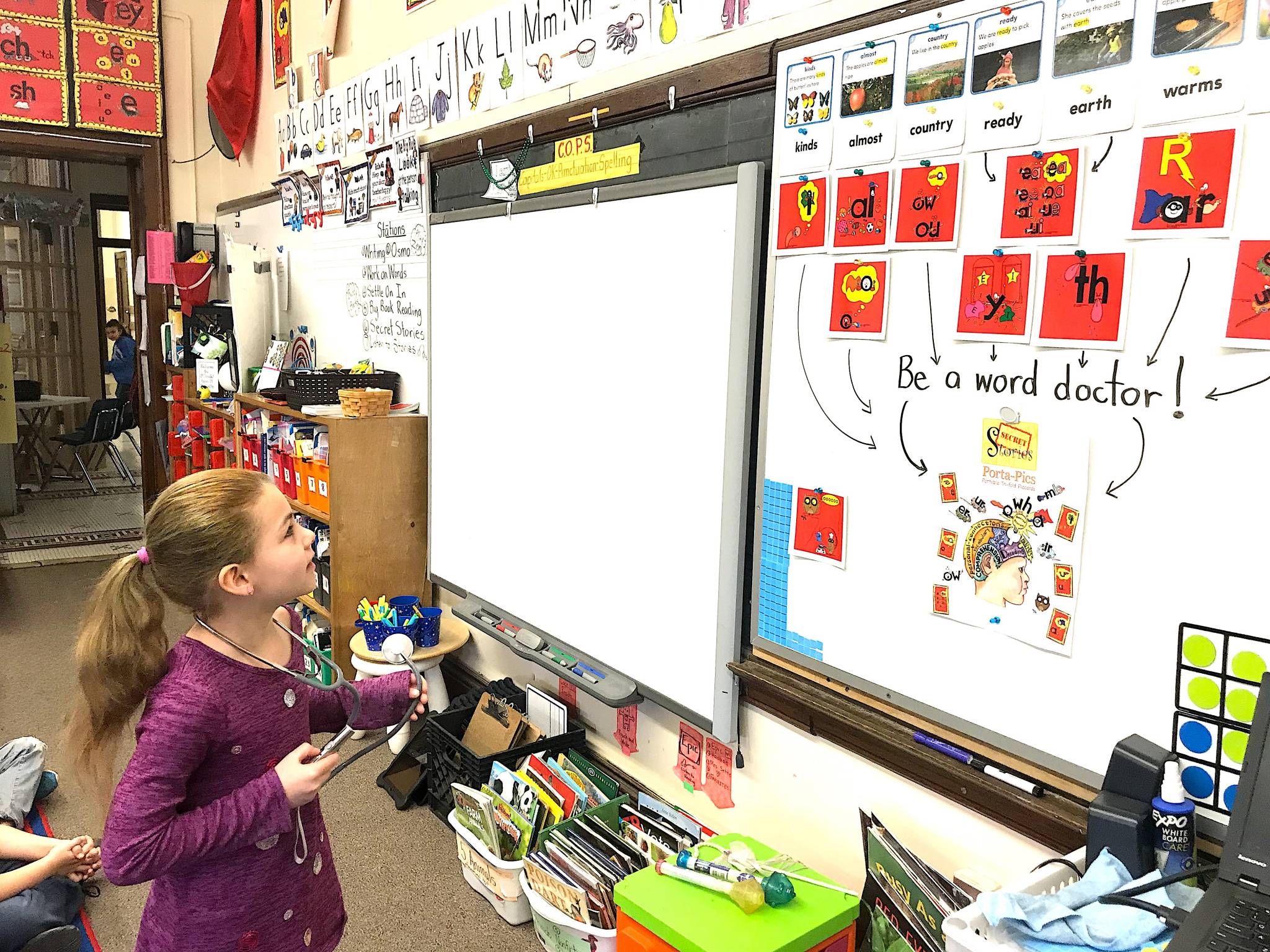
This is why earlier and faster access to the code is so important for beginning and struggling readers, as only once kids know what’s IN the box are they able to think outside it!
The Secret Story of ou/ow…
Ou & ow play really rough and someone always gets hurt and says— “Oooowww!”
(like in the words: how, now, round, house, etc.)
But, flying overhead is Superhero O, who happens to their all-time, favorite superhero, ever! Whenever he flies by, they will always stop dead in their tracks and yell—“O! O! O!” That’s why the default sound for ou/ow is the long o sound!
(like in the words: know, though, blow, dough, etc.)
The Secret makes sounding out the words with this phonics pattern easy, even in kindergarten! Words like how, now, about, around, know, grow, though, etc., that are commonly found on sight word lists don’t have to memorized, as kids can just READ them! Plus, because it relates back to what kids already know and understand, they can learn (and start using) the ou/ow Secret even if they haven’t yet mastered all the individual letters and sounds. yet because it makes sense to them.
Alternatively, memorizing a sight word can take multiple repetitions and seemingly take forever for some students to master, especially if there is little home support. More importantly, memorizing a sight word lets you read ONE word, whereas knowing a Secret lasts you read thousands!
Consider the word you…
The ou isn’t doing what it should according to the Secret. Even still, its sound hasn’t fallen too far away… at least not so far that a good word doctor can’t still figure it out.
And here’s how…
1. First, try the most likely Secret Stories sound for ou (as in house)….. NOPE, it didn’t work!
2. Next, try the individual sounds for the letters o and u ….. BINGO!!! We got the word!!
In this case, we got it on the second try.
Now, had we not struck gold on our first “out-of-the-box” attempt, we could have worked our way further down the list of possible sound options and turned this puzzle into a sort of problem-solving/critical thinking game….
3. Try the sounds of other Secret Stories patterns with o or u, like the Secrets for oo, oi/oy or ous. For example, in the word could, the ou is making the default-sound for oo (as in book) and kids who know the oo Secret might try that sound as one more possible option.
Thinking Vowels® / Head-Bop
And of course, the Thinking Vowels® head-bop trick is another great word doctor-tool to help kids decode those otherwise “undecodable” words, like of, come, love, some, what, was, etc.. (Learn more about Thinking Vowels® here or click on the picture below for the video.)
4. It’s the PLAGUE! It requires a specialist! When we’ve exhausted all options and have no more tricks up our sleeve, we must surrender to the word, which means we have to memorize it!
Why Not Just Memorize These Tricky Words?
Here’s why— because it is within this “figuring-out” process that cognitive flexibility is strengthened and opportunities for deep learning lie! Not just learning how to read, but learning how to think! Our brain is a pattern-making machine, and this patterning process of thinking-through all available options is its natural way of doing things. “If not this, then that…” Our brain is continually “patterning-out” the best available options in everything that we do…
We think… “I’ll park in the front, but if I can’t find a space, I’ll try the back, and if that doesn’t work, I’ll try the next lot over. If I can’t find anything there, then I’m giving up and going home, as I’m too tired to walk that far.”
We don’t think….“If I can’t park in the front WHAT WILL I DO?
This is similar to the way kids often deal with words that are exceptions, throwing their hands up in surrender whenever the letters aren’t making the sounds that they should.
However, this is not the brain’s system for learning. Our brain always has a back-up plan, a “next most likely” option to try if the first one doesn’t work. Much like the way doctors diagnose patients. They don’t just try one course of attack and then throw their hands in the air and give up. And good word doctors can’t either.
“Human beings are pattern-making machines. That’s a key to our survival instinct— we seek out patterns and use them to predict the future. Which is great, except when the pattern isn’t there, then our pattern-making machinery is busy picking things out that truly don’t matter.”
—Seth Godwin, author of Looking for Patterns (Where they don’t Exist
The Brain is a “Pattern-Making” Machine
Our brains are hardwired to look for patterns, and the Secrets are patterns— not abstract letter patterns, but patterns of behavior that are designed to mimic learners’ own behavior. The ability to classify incoming information quickly into categories (based on the patterns we know) means the brain can use easier rules to deal with the new input, which is less stressful than always having to deal with things that haven’t been seen before. Knowing the Secrets equips inexperienced beginning and struggling learners to identify the best course of action when sounding out new words, and not knowing the Secrets means having to say, “It just is… It just does… You just have to remember….” when they can’t read or spell a word.
Another benefit to reading words rather than just memorizing them is that it sparks more optimal brain circuitry, as evidenced by numerous studies, including a recent one by Stanford University Professor, Bruce McCandliss, which you can read more about here.
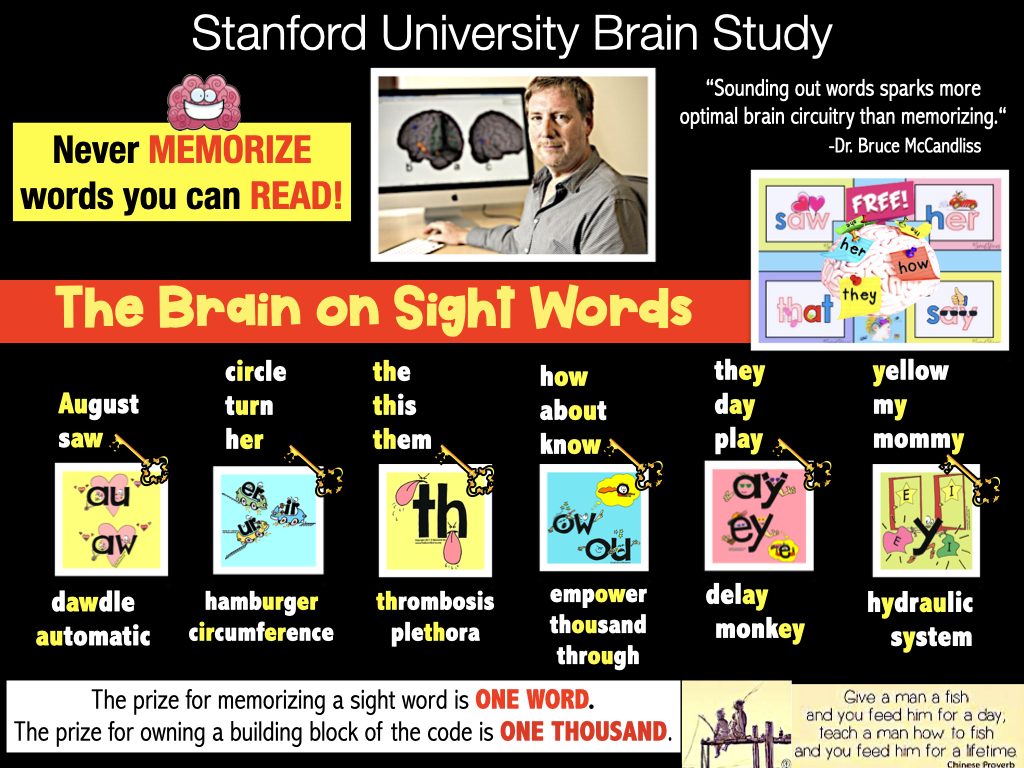 |
| Decoding Sight Words with Phonics Secrets |
It just is. It just is. You just have to remember.
Before you read any further, watch this video.
It’s easy for teachers to empathize with Ricky’s struggle to read words like: boughs, through, rough, cough and enough. Like many students in our guided reading groups, Ricky diligently attempts to decode what seem to him to be ‘un-decodable’ words and becomes understandably frustrated in the process. Ultimately, Ricky just closes the book and gives up, convinced that the sounds letters make just don’t make sense. Many of our students feel the same way.
In the same way that a doctor works through various options to heal a patient, we can do the same to “heal” the words that are stumping Ricky…. or at least to help make them more “figureoutable!” ( I know it’s not a word, but I really like it!)
First, we need to learn a Secret…
 |
| Click here to learn the gh Secret |
The Secret Story of gh
Gh will make different sounds, depending on where they are in line (i.e. in a word)
When they are at the FRONT, they’re glad!
There, they make the hard g sound, saying….
“Gosh, this is great! We get to go first and get in before anyone else goes!”
(ghost, ghoul, ghastly, etc…)
When they are in the MIDDLE, and surrounded by lots of other letters,
they are silent and are too afraid to say anything and make NO SOUND at all
(sight, thought, straight, etc…)
When they are at the END, they’re not at all happy and they always complain.
Here, they make the fff sound, saying….
“This is no fun! We’re so far away it’ll take forever for us to get to the front!”
(rough, enough, cough, etc…)
Playing Word Doctor

bough
No problem with the ou as it is doing just what it should (see ou/ow poster up above)
But gh is a different story, as it is not making the sound that it should, which is “fff.” So let’s try one of the only TWO other sounds that it can make, and voila! We got it! The gh is silent! The gh Secret is everything that’s IN the box when it comes to all of the possible sounds that gh can make, making it easy for learners to deduce the next most likely options when it doesn’t do exactly what it should!
rough
Luckily in this word, gh is doing exactly what it should. However, just like in the word you (at the top of the post) ou is not making the sound that it should, but all good word doctors know that the vowels are the “eyes, ears, nose and throat” of a word, so they know to always check the vowels first whenever something’s wrong. If they try the both the long and short sounds for o and then u, they would ultimately “get” the word, as only the short u is heard, and o is not saying a word. This is actually pretty common for one vowel in a pair to sometimes divert to its individual sound while other remains silent. You’ll see it happen again in the next two words as well, so it’s pretty handy for word doctors to know about! On a side note, gh is doing exactly what it should at the end of a word, so there’s no issue there.
cough
Just like the in the word above, ou is not making the sound that it should. Only the short o is heard and u is not saying a word. And again, the gh is doing exactly what it should.
enough
Once again, the ou is not making the sound that it should, as only the short u is heard and o is not saying a word. And once again, gh is doing exactly what it should.
though
In this word, it’s gh that’s acting up, as it’s not making the sound that it should at the end of a word, BUT…its sound is still easily predictable. There are only 3 possible sounds that gh can make, so any good word doctor knows to work through the most likely option first, and then try the others until they “get” the word. And luckily, this time ou is well-behaved!
through
Now this one’s a little trickier— bordering between being “fun to figure out” and “just easier to memorize!” I would probably go with the latter for this one, but it is gratifying to know that with a whole lot of cognitive flexibility, we CAN crack this word if we really want to!
Granted, the ou is not making the sound that it should, nor is it making the o or u sound, but like the word you that was mentioned at the top of this post, it IS making the sound of its “cousin” oo. And by cousin, I mean a Secret that looks like it’s a “relative” as they share common letters, which in this case is an o. Using this “hierarchy of likelihood” to work through the most, next most and finally “if all else fails” options mirror the brain’s system for learning, and it’s great critical thinking practice for young word doctors.
But we’re not done yet, as we still have that same little problem that we had above with gh, but it’s nothing that a good word doctor can’t fix! However, it does require an extra analytical step to crack the word, which may be one too many to make it worthwhile. Thus, this word may be worth the extra time, energy and space in the brain that’s required to memorize it.
The video clip below shows a group of first graders playing “Word Doctor,” applying critical analysis and diagnostic thinking to make sense of the word light. While they already know how to read the word, they want to know WHY I isn’t saying his name when Mommy E® and the Babysitter Vowel® is in sight.
For a quick overview of the Superhero Vowels® and their “short & lazy” sound disguises, watch this video.
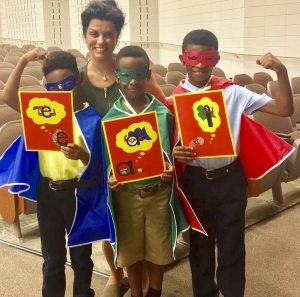
As mentioned above, the vowels are the most likely culprits when words just won’t “sound-out” correctly. Remember that they are the eyes, ears, nose and throat of words, which is why good word doctors always check them first, as they’re the best “window” into what’s going wrong.
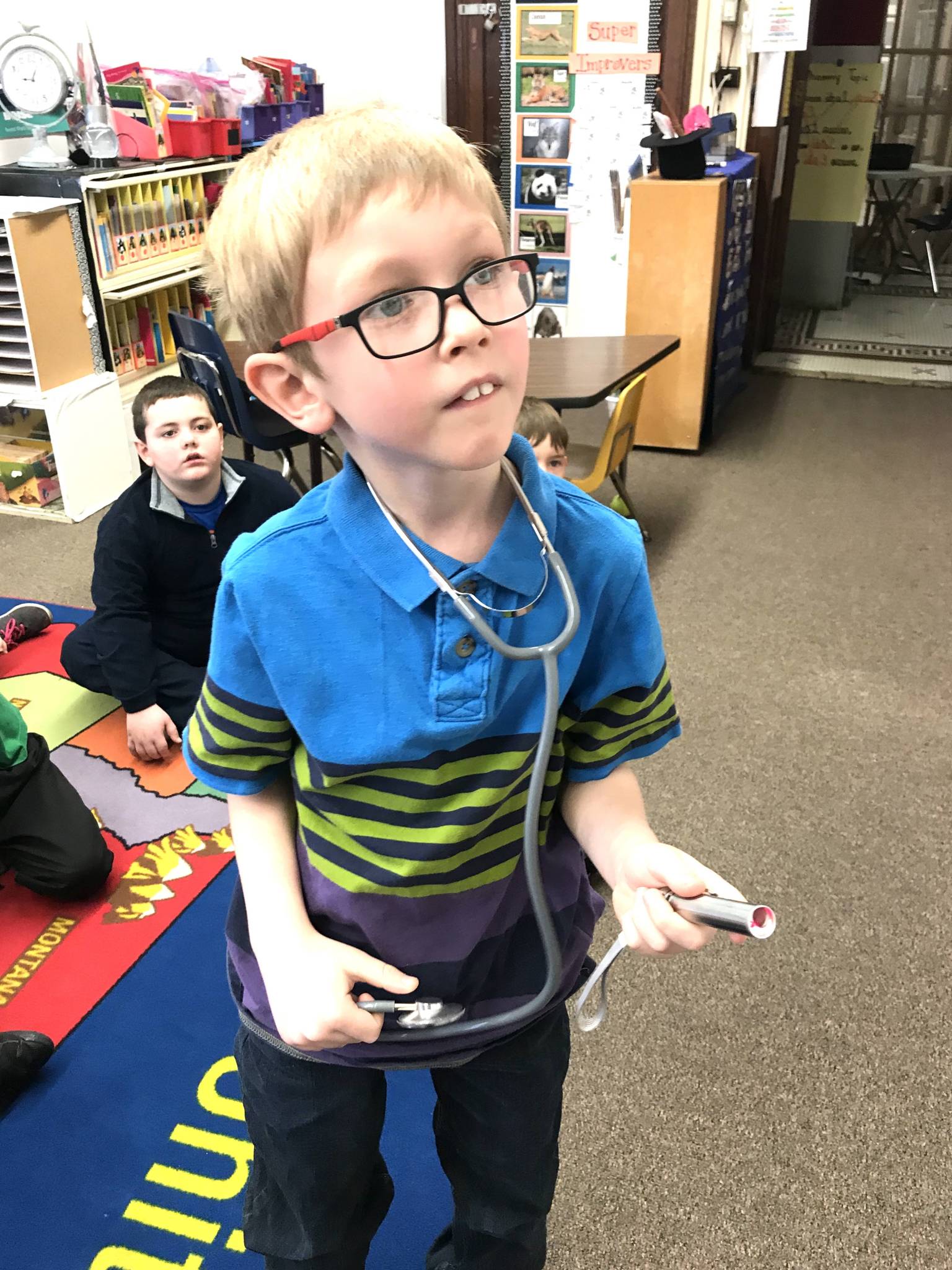
Learn more word doctor strategies for tricky vowel sounds here, including the Hungry Thing and the Hungry Thing Returns.
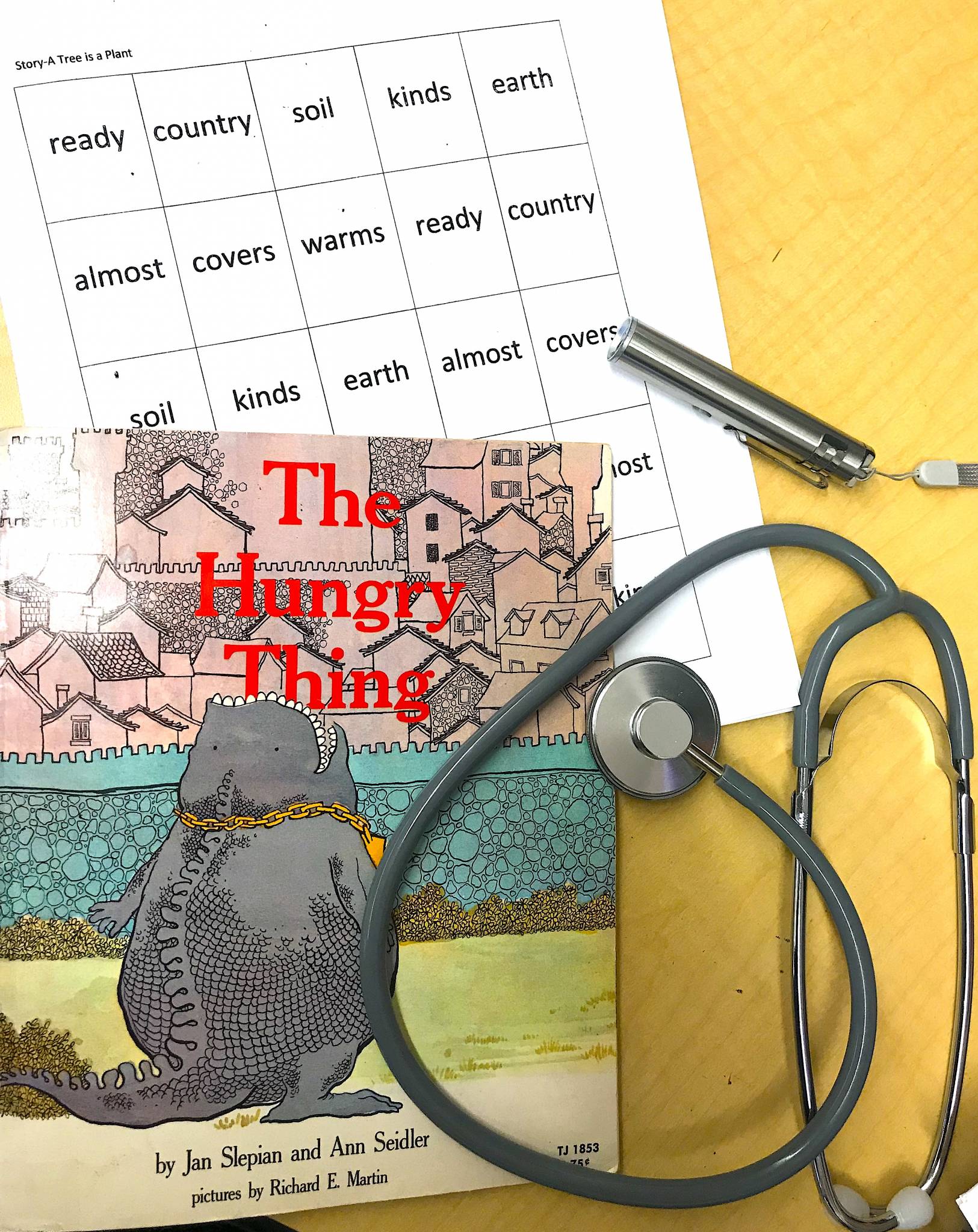
For EVERYTHING Secret Stories®, join the new Secret Support Group on Facebook!


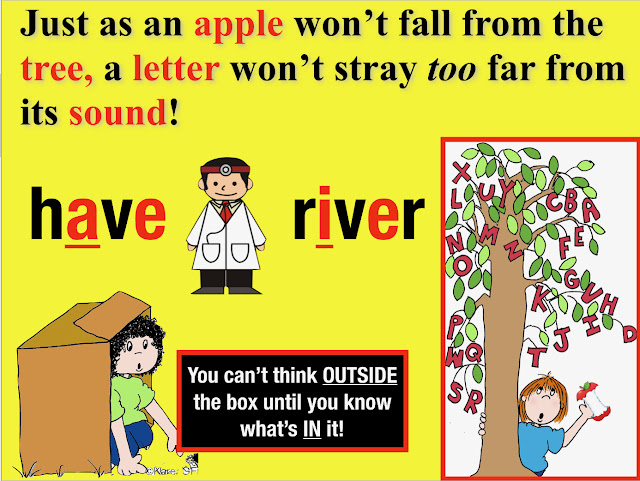
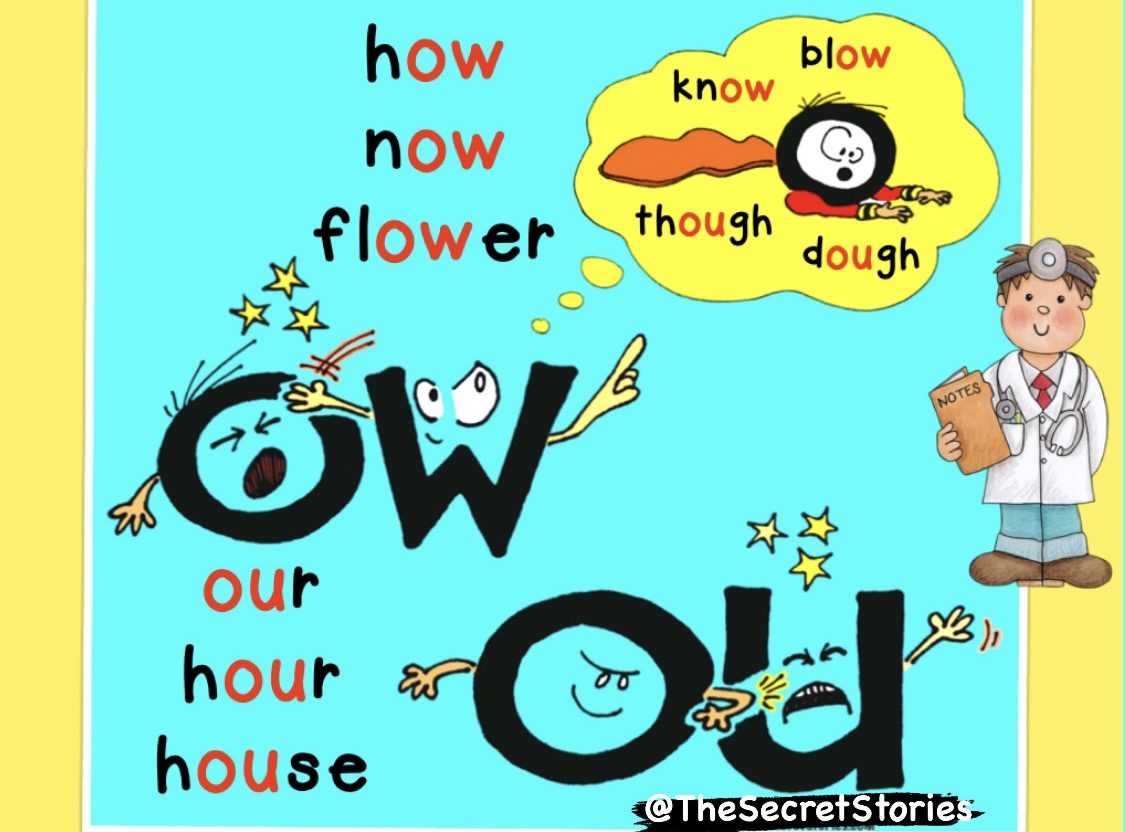

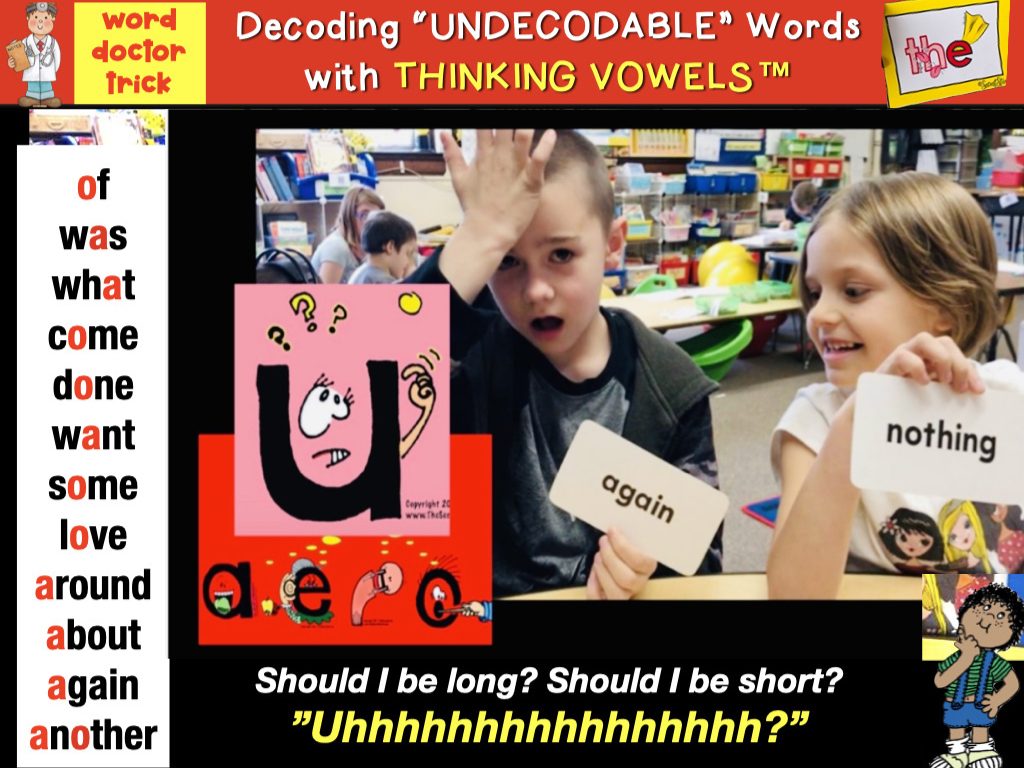
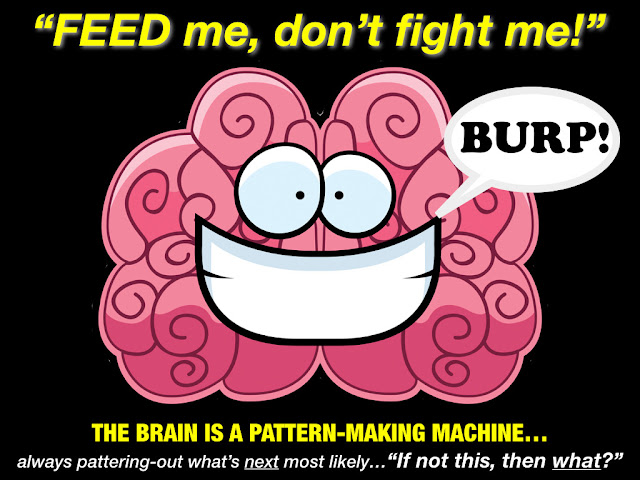

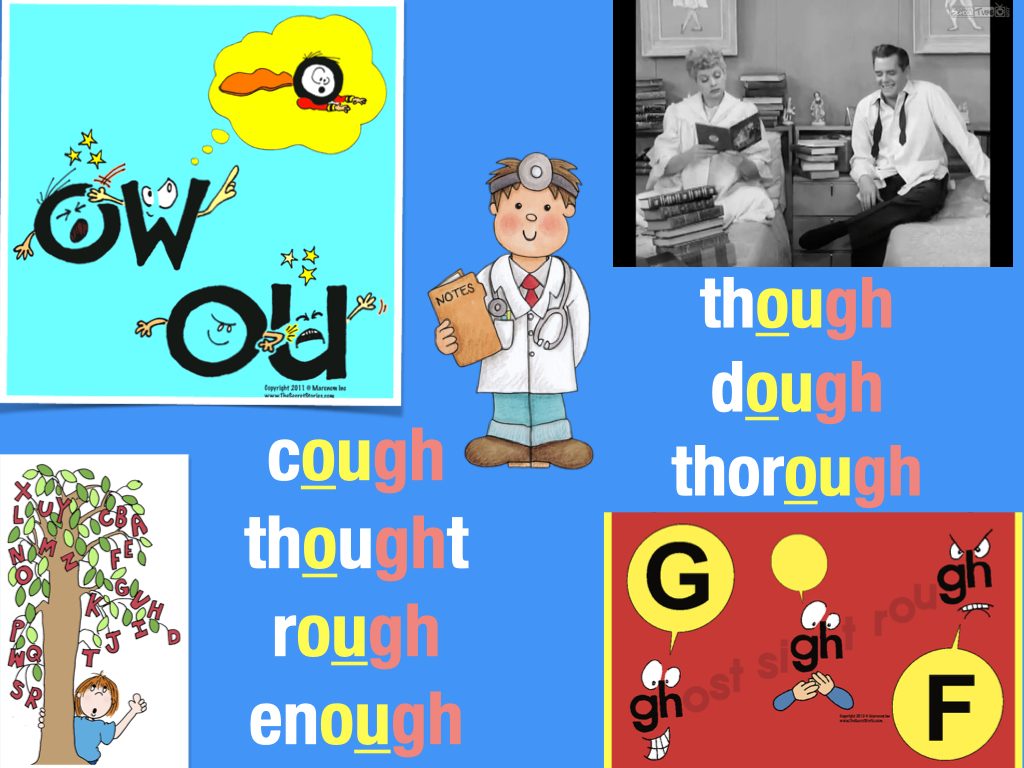

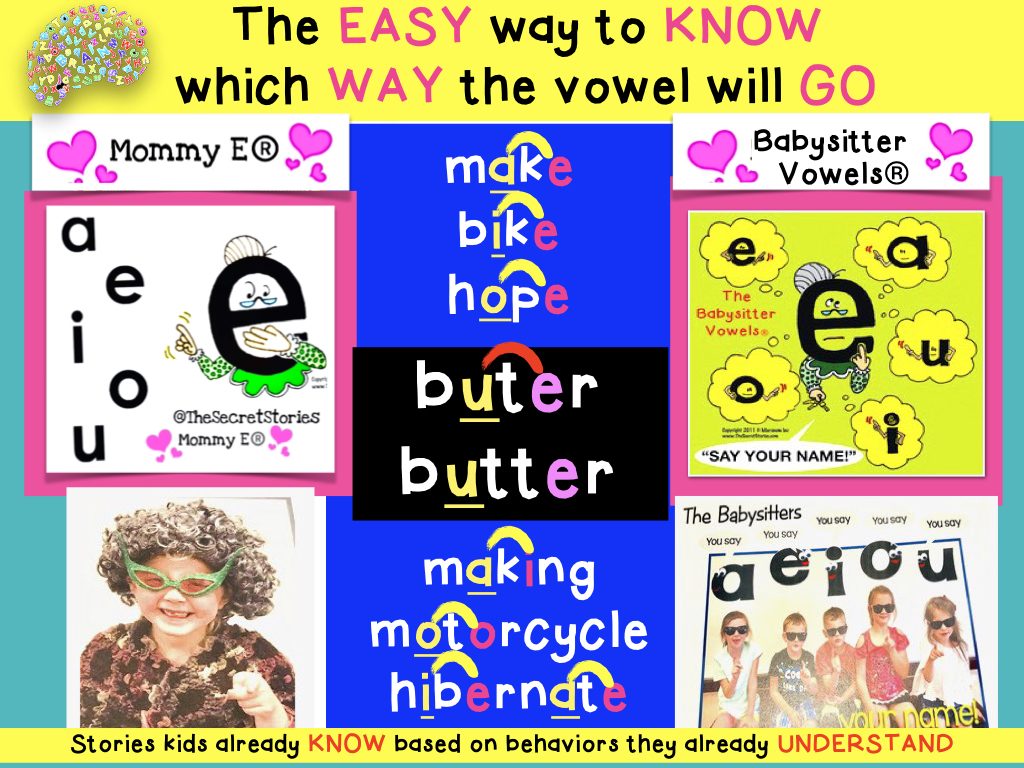







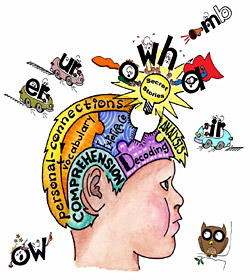

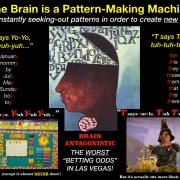
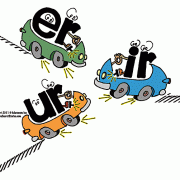
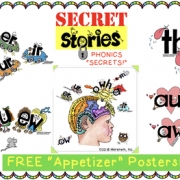
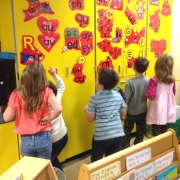
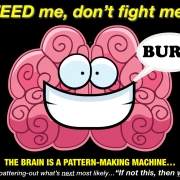





Amber O.May 29, 2014 at 10:36 PM
Katie,
Okay… I have the book, the CD, the posters, the complete set (thanks to your monthly drawing!) and I am very excited to start using it with my new group of kiddos this fall. My question right now is: what do we say to our young readers when they go through a "word diagnosis", like we would have to do for all those words above? How do we encourage them to keep trying different sounds until they hear a word they know, and then try that correct-sounding word in context to make sure it makes sense? Before, when I instructed small groups, I would just tell them the word and then add it to their sight word list or practice it a few more times as a "sight word" in a group or individually until I felt it was memorized. Bad practice, I realize now, but having them keep trying sounds they know seems exhausting! I know it will help them much more having to figure it out on their own, but I just wonder if you have a bag of tricks or phrases you use to keep them from getting discouraged and just giving up! Thanks for this post and any further tips/advice on this issue!
SweetSchoolMoments
Great question! But it comes from a traditional 'skill-based' instructional context… one in which letters, patterns and sounds have to be "taught" and "learned." When I write these blog posts, I sometimes forget to account for the paradigm shift that occurs when sharing the skills rather than teaching them, as you would have to do in traditional instruction, in piece-meal-fahsion from K through 3rd.
With the Secrets, you can just 'give' them the skills/ tools they need…. literally… AS they need them, so as to effectively acquire "everything needed" in-tandem with WHEN it's needed. As you now have the kit, you'll see that it's really THAT easy! Even if you are in your last couple days of school, try out a few Secrets with the kids and you'll see what I mean :)
The 'social-emotive' neural pathways used to "acquire, store, and apply" the Secrets are the same as those used to tell the sub "who's supposed to be the line leader…. who can't sit by who…. who should never eat peanuts, etc.." In other words, the 'options' they are working through are just as familiar to them as the back of their own hand, regardless of whether they are PreK or remedial middle school. That's what's so awesome about teaching with the brain in mind, especially in phonics skill instruction, which is literally 180 degrees in defiance of how the brain learns.
As for how to initiate the 'diagnosis' process….MODELING, MODELING, MODELING! All the time, across all subject areas. Take advantage of the fact that students read and writing ACROSS the curriculum, and throughout the instructional day. When I do school inservice with intermediate grade teachers, the Secrets are actually 'buried' within their content area instruction, so as to be shared in varied contexts every day, as opposed to primary grades, who have the luxury of focusing on reading and writing skills, specifically.
If you want to get an idea of how the modeling would look, you can check out the super short video clips on the Secret Stories website, under the heading "LIVE in the Classroom" here……. https://thesecretstories.com/video/video-how-it-looks/
Thanks so much for the great question, and I would love to hear back if you get the chance to play around with some of the Secrets before school ends this year!
What great info! I am your newest fan and I hope to have the chance to see you in person at an upcoming conference sometime this year!
Jenny Tisdale
Jtlos@bellsouth.net
This comment has been removed by a blog administrator.
Okay, here goes.
First of all, I am your number one fan!
I attended both of your workshops at the Colorado Conference and could have gladly attended ten more times. I just couldn't get enough of what you were saying! Everything just made so much sense and completely made me rethink all that I do with my little guys in the classroom. Anyway, I literally could not stop talking about you and the Secret Stories for the rest of the day, so probably to shut me up, the teachers I had come with agreed to come with me to see your next session, after which we were ALL obsessed!
Our primary teachers now use the Secret Stories across the board and our intermediate grades will be starting next fall. I just wanted you to know that as amazing as I thought the secrets while listening to you at the conference, they're even BETTER!!!
Thank you Katie and Mrs. Jump for putting these incredible teaching tools into the hands of teachers who haven't had the chance to experience them!
And Katie, any chance that you will be doing an institute at CCIRA this year? If so, I will need to start harassing my principal now so that I can go!
I tried to edit and add on to my previous comment but it wouldn't let me so I had to repost this, but I was also wondering what you thought about preK starting the secrets before the kids get to k, as ours haven't yet, but I know you do mention them in your video blogs
We are all big fans of the Secret Stories at our school. Everyone from kindergarten through second grade will have it next year, and I'm very excited about that! I found the article very interesting because I've been one of those teachers who has ended up giving words to children when I thought the Secret Stories could not be used. I will definitely let my students know in the future that sometimes they need to try other sounds for the vowels, rather than the traditional Secret Story sounds. It's definitely a different way of looking at things, and I'm excited about trying it. I'm going to try it over the next week and a half of school and am anxious to see how they do. Katie, you make such a difference in students' lives. My students have done very well in reading this year, and I feel that I owe it to you and the Secrets! Thanks for all that you do!
This comment has been removed by the author.
First of all, THANK YOU for the so, so, VERY kind words! They really are very much appreciated, and I am so happy that you got a lot out of my session…. BOTH of them! LoL! I've been told that I talk so quickly that it actually takes two times listening to catch it all ;)
As for your questions, I will be at the Colorado Conference, I wouldn't miss it, as it's one of my favorite venues and always crazy crowded… in a good way! As far as doing an institute, I'm not sure if I will be able to get in in time, as I fly in from another venue and the timing might be tight. I should know for certain sometime this summer once all of my contract dates are finalized w/ exact dates & times. Just keep an eye on the schedule listed on the Secret Stories website later this summer when it gets updated again.
With regard to preK, YES! Both four AND five year olds have identical acquisition times (2 weeks to 2 months) for the individual letters and sounds when acquired through motor memory, as compared to the standard full year or more when relying on cognitive processing, given the inherent developmental readiness issues at that age.
You can share this information with them…. http://readingwritingsecrets.blogspot.com/2014/03/now-i-know-my-abcs-next-time-wont-you_29.html about the Better Alphabet Song/ individual letters and sounds, and encourage them to just try it out. I think It's always best to see things with your own eyes rather than trying to convince them, although I appreciate your trying to do so!
I actually posted free pieces on TpT and made the vlogs so that anyone interested would be able to try out a few of the strategies & techniques and see the difference in when sharing these skills with the brain in mind, as opposed to the traditional way.
I hope this helps, and again I thank you SO much for your post, and I hope to hear more, especially as your upper grades begin implementing in the Fall!
Our school has been using the Secret Stories all year in our pre-Kindergarten through 5th and we've seen a remarkable improvement across the board, with our primary K-2 grades actually scoring almost an entire YEAR above grade level on their end of year RRRs! I want you to know that I will be downloading every single one of your blog posts this summer and making them into packets for all of our teachers to have at the beginning of next school year, they will be beyond excited! I can't wait to get more "inside-info" into the secrets!
THANK YOU!!!!!!
So much great info and I will definitely be sharing ALL of it with the rest of the teachers at my school, as we all use the Secret Stories and we absolutely love them, and so do our kids! They will be so excited to find out about your new blog, as we're already dedicated vlog followers!
I only wish that there were more educational authors willing to take the time to share their personal insight into the strategies they create and connect with the teachers using them. The information you share is not just informative, but it's inspiring! Just reading this post makes me want to jump back into my classroom and take our Secrets to a whole new level!
I am a follower of your blog and will be a first time kindergarten teacher next year! I do not know why I cannot comment, but hopefully I can still be entered. Thank you!
Alison Gray | afisher1086@yahoo.com
I would LOVE to win a new Secret Stories set! My set is well used and much loved!!
Denise
kindertcher20@yahoo.com
Diane,
Thank you so much for your lovely message, as knowing that the Secrets are making a difference in your classroom and at your school is so wonderful to hear!
As to encouraging kids to try alternative sounds, I think I will actually be doing the next post on how this works, but in a bit more detail, as it's actually SO MUCH EASIER than I think it might sound…. especially to those who do not use the Secrets and can't fathom their students even knowing ONE sound for some of the Secret patterns, let alone MULTIPLE ones!!
These video clips provide a glimpse into how this flexible 'critical-thinking' model would look in Kindergarten…..
https://thesecretstories.com/videofiles/clip12.html
https://thesecretstories.com/videofiles/clip11.html
Hopefully this will help show how easy (and incredibly powerful) this technique actually is…. especially with the earliest grade levels :)
Wow, I didn't even know that you could download blog posts?!! But that's great, as that's what they're there for! So happy that you are finding them useful!
Congratulations on your students' performance! That's so exciting, and you and your fellow teachers (and students!) should be very proud!!!
I actually tell teachers that when sharing all of the SECRETS at one grade level (which is what you do) students at the primary grades will test, on average, approx. 1 to 1.5 years above grade level. This is due simply to aligning skills that are inherently NOT brain-freindly' with how our brains actually learn best, which is to feed its natural inclination to 'pattern-out' NEW information in such a way that it can be easily connected to what's ALREADY owned. Learners' ability to think through the various options when phonics rules don't 'exactly' apply is key to this, as otherwise, logic is lost, and so is the ability to 'pattern' (i.e. make sense of the skills).
Whew, that was sort of a mini-post all to itself! Anyway, thanks again for the great news and very kind words!
I'm thankful that you found it as well! That's why I encourage those interested and already following Deanna's awesome blog to follow my blog to follow mine if they want to get all of the posts, as I will be doing more posts on my blog than the couple per month I'm doing here.
I will actually be adding to the VLOGS as well, and now have them linked/ posted directly on my blog, which makes it easier to know when new ones are posted, as I will announce it.
As for connecting with the teachers using the Secrets in their classrooms, I LOVE LOVE LOVE getting opportunities to do so, as that's how I can see what works easily and what requires a little more info to ensure maximum effectiveness! I especially love getting to be in their classrooms when I'm out for school in services and even more so, getting the chance to interact with their students directly!!
As for being inspiring, first of all, THANK YOU :) If nothing else, I think teachers need to be inspired if they and their students are to be successful, and some schools/ districts support teacher-inpsriation much better than others, especially in the current times. Getting teachers excited enough to jump into a new way of 'thinking and doing' is always my primary goal…. especially in workshops and sessions at conference! That, and making sure that they have everything they need to jump right in and try out some of the strategies the following day in their classrooms…. as nothing beats seeing your own "little Johnnys & Suzie's" do things in reading and writing that they have never even been close to doing before! LoL…. even while TYPING this I'm getting excited ;)
Anyway, thanks so much for posting and letting me know that the info is helpful, it's much appreciated!!
It's kind of hard unless you have a google or blogger account. I have opened my blog up so as to allow for anonymous commenting, although if spam begins to come in, I might have to change that. My only advice is to type a letter or two in the box and then hit the 'preview' button, as then you will be able to see the options for posting in the window. Then you can delete the letters and type your comment. Does that make sense??? :)
So glad to hear it, and with everyone going on vacation and so few posts this month, the odds are definitely MUCH better!!
I would love to win a your Secret Stories kit. I teach first grade and I know my kids would love it. I have been promoting it with my whole team. I'm working on our PTA to buy it for us. Fingers crossed that I win!!
I can't wait to begin using what I've learned about the "secrets"!!!
This comment has been removed by the author.
I've always loved the secret stories.
I just discovered your blog, program and video and I love the thinking behind your program. Although I teach K, I feel your program could easily be used to help older students who are struggling. By the way, researching your program got me thinking about strange spelling phenomena and yesterday my husband and I sat around researching and discussing the etymology of the "ie" in words like friend and fiend. We are totally nerds!
I would love to win a class set! I just discovered your blog. I am so excited to use some of your ideas and resources this year with my kinders.
byrdland@swoi.net